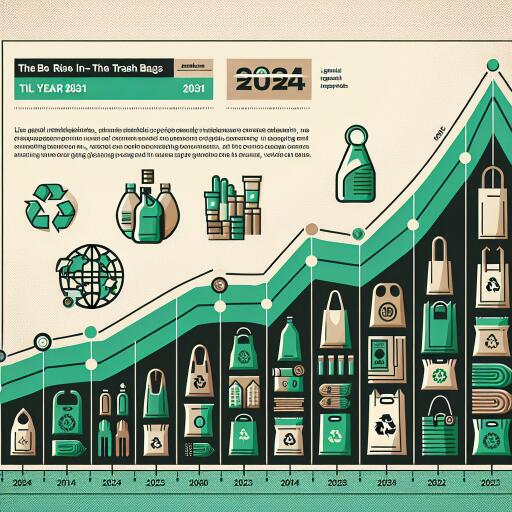The Trash Bags Market is a crucial component of the global effort to manage waste efficiently. It encompasses the production, distribution, and disposal of bags specifically designed for collecting trash from various sources, including households, restaurants, medical facilities, industrial and commercial establishments. The market’s significance is amplified by the growing focus on sanitation standards, urbanization, and the imperative to implement sustainable waste management practices.
### Understanding the Trash Bags Market
Trash bags, an indispensable tool for hygiene and sanitation, are made from a variety of materials such as traditional plastics, biodegradable plastics, and compostable materials. This diversification caters to the increasing environmental consciousness among consumers and the stringent regulatory demands for sustainable products. Innovations in the market are largely driven by the need to improve the strength, durability, and eco-friendliness of trash bags, ensuring they meet the evolving needs of consumers and comply with global regulatory standards.
### Market Dynamics
The Trash Bags Market is propelled by several key factors:
– Urbanization and the consequent increase in waste production necessitate robust waste management solutions.
– Growing environmental awareness among consumers is steering demand towards eco-friendly trash bags.
– Regulatory policies across the globe are increasingly mandating the use of sustainable materials for trash bags.
### Leading Players in the Trash Bags Market
Several prominent manufacturers are leading the way in the Trash Bags Market, including:
– Clorox Company
– Berry Global Inc.
– Reynolds Consumer Products
– Novolex
– Inteplast Group Ltd.
– Poly-America L.P.
– Four Star Plastics
– International Plastics
– Cosmoplast Industrial Company (L.L.C.)
– Terdex
– Novplasta S.R.O.
These companies are at the forefront of developing innovative trash bag solutions that are durable, efficient, and environmentally friendly.
### Market Segmentation
The global Trash Bags Market is segmented based on product types into non-biodegradable and biodegradable categories, addressing the varied preferences and requirements of consumers. Application-wise, the market caters to residential, industrial, and commercial sectors, each with unique demands and usage patterns.
### Regional Insights
The market analysis covers key global regions, including North America, Europe, Asia-Pacific, South America, and the Middle East and Africa. North America and Europe are notable for their stringent regulations on waste management and sustainability, driving significant demand for eco-friendly trash bags. Meanwhile, the Asia-Pacific region is witnessing rapid urbanization and awareness regarding sanitation, contributing to market growth.
### Market Outlook and Opportunities
The forecast for the Trash Bags Market looks promising, buoyed by the continuing emphasis on sanitation, health, and the environment. The advent of biodegradable and compostable trash bags is opening new avenues for growth, responding to the global call for sustainability. Moreover, advancements in material science and manufacturing technology are enabling producers to enhance product offerings, making them stronger, more versatile, and environmentally friendly.
As the world grapples with the challenges of waste management and environmental conservation, the Trash Bags Market is poised for significant expansion. Its future trajectory will be shaped by how well it aligns with the global sustainability agenda, adopting innovations that reduce environmental impact while meeting the practical needs of waste disposal.
In summary, the Trash Bags Market is a vital part of the global waste management ecosystem, evolving in response to environmental concerns, regulatory landscapes, and consumer preferences. Its growth is driven by the need for efficient, sustainable solutions to manage the ever-increasing waste generated by urbanization and economic development. As such, the market offers substantial opportunities for businesses that can innovate and adapt to the shifting dynamics of global waste management and sustainability standards.
